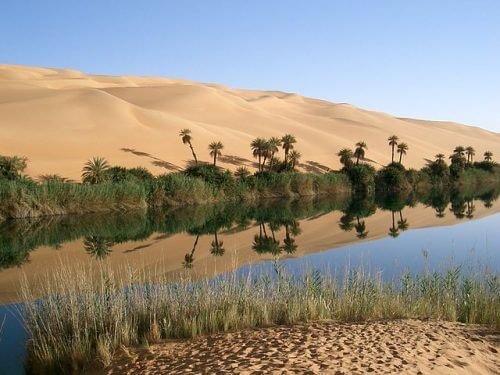The springs were service stations that allowed ancient hominids to survive when they wandered the territories of Africa. These service stations were also meeting points between different populations, and even allowed for a genetic bond that resulted in the development of the human population

In the trainings on the trips, I usually emphasize that water points in the desert dictated the location of roads and as a result the water became important intersections and also flourishing settlements. Now published in the journal "Nature" Research that shows the importance of permanent springs for the development and evolution of the human species.
An international team of researchers led by Dr. Mark Cuthbert from Cardiff University, believes that the movement of our ancestors in East Africa was dictated by the location of water springs.
According to the researchers, the springs were service stations that allowed ancient hominids to survive when they wandered the territories of Africa. These service stations were also meeting points between different populations, and even allowed for a genetic bond that resulted in the development of the human population.
Assuming that the human species first developed in Africa, the evidence indicates that the first hominids migrated out of Africa about two million years ago. At the same time the rains were affected by the African monsoons which strengthened or weakened in a cycle of 23,000 years. During periods of extreme dryness, the monsoon rains were light and drinking water was scarce. By mapping permanent springs (springs that do not depend on seasonal rains) the researchers built a map of the migration of people between water sources at different times and modeled how the presence of water made it possible to cross areas when the climate changed.
Dr. Cuthbert says: "We found that geology is an important factor in storing water in the soil during rainy seasons, sampling springs shows that many of them also flow during dry periods." This way it is possible to understand how the geology, and not only the climate, enables the availability of water which is a catalyst for changes in Africa.'
A partner in the research says that: "You see the movement of people in the spaces and the springs can be compared to service stations and rest stations where people obtained the vital liquid. In the mapping of the permanent springs in the area, ancient roads were found on which our ancestors wandered, leading from one water source to the next spring. This is important evidence for understanding how people migrated across Africa."
Groundwater currently provides about a third of the drinking water consumption for the world's population, as well as is used to produce a significant part of the food. Water is an essential component of natural capital and this study shows that water may have been a factor in the history of human development.
Most human populations are in the vicinity of water sources and yet to date the role of water in human evolution has not been fully clarified. The researchers showed how hundreds of springs throughout East Africa formed a "water-refuge" (hydro-refugia) during periods of drought, groundwater bridged between periods of drought and climatic changes.
According to the researchers: "The result of our study provides a new environmental framework in which it is possible to understand how the sorting model of the variety of hominids developed."

One response
Also in Israel - there were lakes in the Negev region, chief among them Lake Tsichor, on whose ancient shores stone tools from the Illusory culture were discovered.
It's worth searching and reading - very interesting